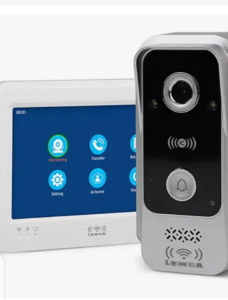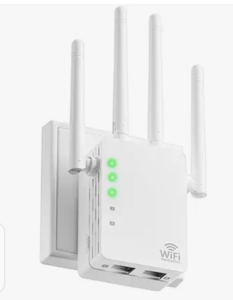Introduction
In today’s digital age, having a reliable and secure home network is essential. Whether you are a tech enthusiast, a remote worker, or simply someone who enjoys streaming movies and music, setting up a home network can greatly enhance your online experience. In this blog post, we will guide you through the process of setting up a home network, from selecting the right equipment to optimizing its performance.
Click here to buy your best home network books using this affiliate link
Setting Up a Home Network Planning
1.1 Assessing Your Needs
Before diving into the technical aspects of setting up a home network, it is important to assess your specific needs. Consider the number of devices that will be connected to the network, the size of your home, and the type of activities you will be engaging in (e.g., streaming, online gaming, file sharing).
1.2 Choosing the Right Equipment
When it comes to setting up a home network, the choice of equipment plays a crucial role in its performance. Here are some key components you will need:
- Modem: This device connects your home network to the internet. Check with your internet service provider (ISP) to determine if you need to purchase or rent a modem.
- Router: The router acts as the central hub of your network, allowing multiple devices to connect to the internet simultaneously. Look for a router that supports the latest wireless standards (e.g., Wi-Fi 6) for optimal speed and coverage.
- Switch: If you have a large number of wired devices, consider adding a switch to expand the number of Ethernet ports available.
- Network cables: Depending on your setup, you may need Ethernet cables to connect devices directly to the router or switch.
- Wireless access points: If you have a large home or experience weak Wi-Fi signals in certain areas, consider adding wireless access points to extend your network’s coverage.
Home Network Equipment
Click here to buy your best home network equipment using this affiliate link
Setting Up a Home Network
2.1 Connecting Your Modem
The first step in setting up your home network is connecting the modem to your internet service. Follow these steps:
- Locate the coaxial cable outlet in your home.
- Connect one end of the coaxial cable to the outlet and the other end to the modem.
- Plug in the power adapter to the modem and connect it to a power source.
- Wait for the modem to establish a connection with your ISP. This may take a few minutes.
2.2 Configuring Your Router
Once your modem is connected, it’s time to configure your router. Here’s how:
- Connect one end of an Ethernet cable to the modem and the other end to the WAN (Wide Area Network) port on your router.
- Plug in the power adapter to the router and connect it to a power source.
- Access the router’s configuration page by typing its IP address into a web browser. The default IP address is usually printed on the router or provided in the user manual.
- Follow the on-screen instructions to set up a username and password for your router’s administration interface.
- Configure your wireless network settings, including the network name (SSID) and password. It is recommended to use a strong password to secure your network.
- Save the settings and wait for the router to restart.
2.3 Connecting Devices to Your Network
With your router configured, it’s time to connect your devices to the network. Here’s how:
- Wired connection: Use Ethernet cables to connect devices directly to the router or switch. Simply plug one end of the cable into the device’s Ethernet port and the other end into an available LAN (Local Area Network) port on the router or switch.
- Wireless connection: On your device, search for available Wi-Fi networks and select the one with the SSID you configured earlier. Enter the network password when prompted.
Optimizing Your Home Network
3.1 Setting Up a Home Network by Positioning Your Router
The placement of your router can significantly impact its performance and coverage. Follow these tips:
- Position the router in a central location in your home, away from obstructions such as walls and furniture.
- Elevate the router to a higher location, such as a shelf or wall mount, to improve signal propagation.
- Avoid placing the router near other electronic devices that may interfere with the Wi-Fi signal, such as cordless phones and microwave ovens.
3.2 Securing Your Network
Protecting your home network from unauthorized access is crucial for maintaining your privacy and security. Here are some measures you can take:
- Change the default username and password for your router’s administration interface to prevent unauthorized access.
- Enable network encryption (e.g., WPA2 or WPA3) to secure your wireless network. This will require a password for devices to connect.
- Regularly update your router’s firmware to ensure you have the latest security patches and bug fixes.
- Consider enabling a guest network for visitors who need internet access. This will keep your main network separate and secure.
3.3 Monitoring and Troubleshooting
To ensure your home network is running smoothly, it’s important to monitor its performance and troubleshoot any issues that arise. Here are some tips:
- Use network monitoring software to track the performance of your network and identify any bottlenecks or connectivity issues.
- If you experience slow internet speeds, try rebooting your modem and router. This can often resolve temporary connectivity issues.
- Check for firmware updates for your devices and apply them regularly to ensure optimal performance and security.
- If you are experiencing persistent network issues, contact your ISP for assistance.
Conclusion
Setting up a home network may seem daunting at first, but with the right equipment and guidance, it can be a straightforward process. By carefully planning your network, choosing the right equipment, and optimizing its performance, you can enjoy a reliable and secure online experience from the comfort of your home. Remember to regularly monitor and maintain your network to ensure it continues to meet your needs. Happy networking!









